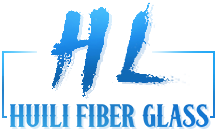Woven roving and chopped strand mat (CSM) are both types of fiberglass reinforcement materials used in composite manufacturing, but they differ in their structure, appearance, and applications. Here are the main differences between woven roving and chopped strand mats:
Structure and Composition:
Woven Roving: Woven roving is a heavy, high-strength fabric made by weaving continuous glass fibers in a crisscross pattern. It typically consists of bundles of untwisted rovings (continuous strands) in a plain or twill weave pattern. Woven roving has a uniform appearance with fibers running in both the warp and weft directions, providing strength in both directions.
Chopped Strand Mat (CSM): Chopped strand mat is a non-woven reinforcement material made from randomly distributed chopped glass fibers held together with a binder. The fibers in chopped strand mat are usually short, and they are typically oriented in a random fashion. CSM is available in various weights, and the binder helps hold the mat together during handling and lay-up.
Strength and Stiffness:
Woven Roving: Woven roving is known for its high strength and stiffness. The continuous fibers in both directions provide strength along the length and width of the fabric, making it suitable for applications requiring a balanced strength profile.
Chopped Strand Mat (CSM): Chopped strand mat is generally less strong and stiff compared to woven roving. Its strength is primarily in the direction of the applied force, and it may not provide the same level of strength in both directions.
Conformability and Surface Finish:
Woven Roving: Woven roving is less conformable compared to chopped strand mat. Its weave pattern may make it less suitable for conforming to complex shapes, and it tends to have a smoother surface finish.
Chopped Strand Mat (CSM): Chopped strand mat is more conformable and can easily mold to complex shapes. Its random fiber orientation allows it to conform to curved or irregular surfaces more effectively. However, the surface finish may be less smooth than that achieved with woven roving.
Resin Absorption:
Woven Roving: Woven roving generally has lower resin absorption compared to chopped strand mat. The tighter weave structure reduces the amount of resin required to wet out the fabric, making it more efficient in terms of resin usage.
Chopped Strand Mat (CSM): Chopped strand mat has a higher resin absorption rate due to its random fiber orientation and open structure. More resin may be needed to saturate and bond the mat during the lay-up process.
Applications:
Woven Roving: Woven roving is often used in applications where high strength and stiffness are critical, such as boat hulls, automotive components, and structural parts where a balance of strength in multiple directions is required.
Chopped Strand Mat (CSM): Chopped strand mat is commonly used in applications where conformability and cost-effectiveness are priorities. It is often used in the production of large, molded parts, like swimming pools, tanks, and general-purpose laminates.
In summary, the choice between woven roving and chopped strand mat depends on the specific requirements of the application. Woven roving is preferred when high strength and stiffness in both directions are essential, while chopped strand mat is suitable for applications where conformability, cost-effectiveness, and resin absorption are more critical considerations. Often, a combination of these materials may be used in composite manufacturing to achieve desired properties.



